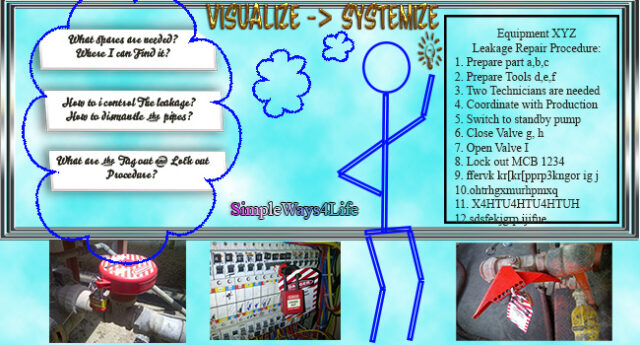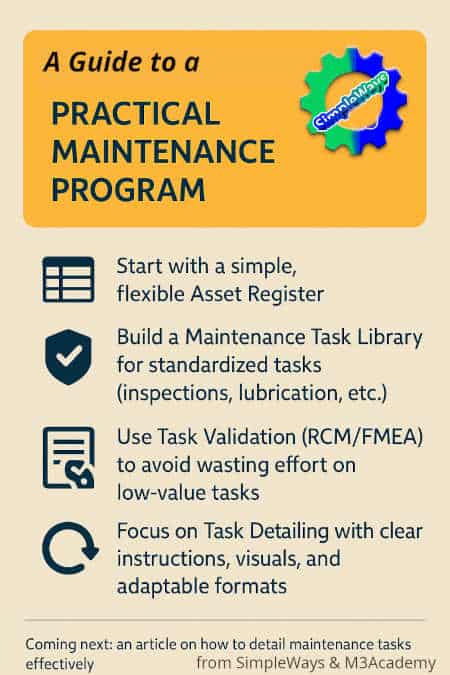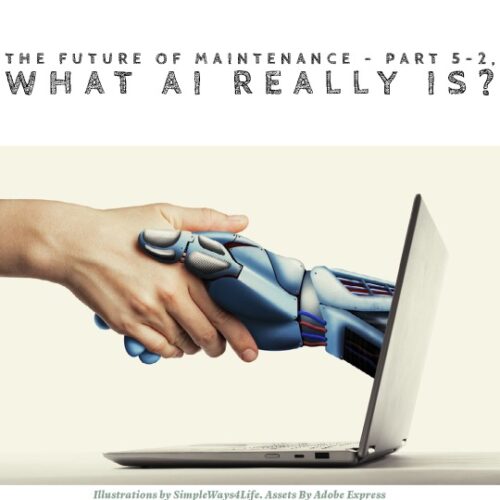Nowadays the hottest topic is the net-zero greenhouse gases. The commitments that will be held by nations leaders to reach net-zero emissions by or around 2050, will be reflected to almost everyone worldwide. There are many challenges that will face the execution of those commitments. On top of the challenges comes the new technologies needed to achieve the net-zero targets. Those new technologies need to be invented, tested and then rolled out. When they reach a widespread application, they would need to be adapted by all organizations at any level. These new technologies will need a new set of skills that consequently needs adequate training.
The second challenge will be the bill of applying those technologies. It is not expected that new methods would result in a less cost of production. The extra cost either will increase the product cost or the organization team will cut costs from somewhere else. If it the net-zero is not achieved, there is another cost to purchase carbon credits to compensate the carbon dues.
The third challenge is the sustainability. All those modifications to how things are done is not a one time snap shot then everything would return to the old days. For those modifications to be sustainable, they need to be maintained. To be be maintained, the government at each nation will raise the bar against any violations. This would include high-ticket fines and additional risks of stopping the operations or slowing it down. When we speak about maintaining the new measures in place then we need a maintenance team skilled up to the level of the new challenges.
What is the environment? How Maintenance activities affect it?
As an entry point we need to define the environment
The surroundings or conditions in which a person, animal, or plant lives or operates.
Oxford Dictionary
So in the work place there are persons and machines and their surroundings is their working environment. Outside the working place, the emissions and wastes from the working place affects the living environment of persons, animals and plants. So we shall try to focus on the maintenance effect on the Environment in the sense of:
- Emissions
- Wastes
Why do I need to understand the environmental impact?
When working in the maintenance field there are 2 approaches that describe your maintenance years experience. The first one, to have some hand skills and follow the instructions of the working place literally. The second one is to understand why you are doing these actions and steps, give recommendations, look for better ways to do the same old stuff or even, recommend new things to be done. The first path will maintain your job while the second one will build your career. To be able to follow the second path, you need to build a more broader understanding of the jobs you are doing. The information is available but we need to dig to find it or, simply ask about it or, spend few minutes searching online.
We shall move together through some information about the possible environmental impact of your work place, why it is regulated and how you can contribute positively to ensure your work place compliance to the regulations. Failure to comply with the environmental regulation results in fines as a first step. However it may result in cancelling the business legalization permits as a whole. So, please, wherever your position is in the maintenance organization, any work order or partial failure related to the emissions, wastes or house keeping is of a vital importance. It is important for your health, your colleagues, nearby humans and other forms of life and to the business itself. At the end of this chat, you will find the references of the data included.
Emissions
emissions : substances discharged into the air (as by a smokestack or an automobile engine)
Merriam Webster
That’s the first common perception about the effect of a working place over the surrounding environment. The air born particles or gases that results from a transformation process were always the prime suspect. Many National Regulations and International Protocols where introduced to control mainly three types of emissions:
Ozone depletion Substances.
- The Ozone layer absorbs most of the sun’s ultraviolet radiation (UV-B), limiting the amount of this radiation that reaches the surface of the Earth. Because this radiation causes skin cancer and cataracts, the ozone layer plays an important role in protecting human health. It also prevents radiation damage to plants, animals, and materials.
- The main Ozone depletion substances include:
- chlorofluorocarbons (CFCs), hydrochlorofluorocarbons (HCFCs), used in refrigerators and air conditioners
- halons, used in Fire Extinguishers
- carbon tetrachloride, methyl chloroform used for degreasing, as a solvent and spot cleaner
- and methyl bromide used for fumigation of soil, structures and goods to be imported or exported.
Potent greenhouse gases and the net-zero carbon.
- Greenhouse gases have far-ranging environmental and health effects. They cause climate change by trapping heat, and they also contribute to respiratory disease from smog and air pollution. Extreme weather, food supply disruptions, and increased wildfires are other effects of climate change due to greenhouse gases.
- In addition to the above gases that had both ozone depletion effect and potent greenhouse effect, the following gases are on the top:
- carbon dioxide (CO2), 70 % of its emissions are coming from Energy. – Electricity & heat (24.9%) – Industry (14.7%) – Transportation (14.3%) – Other fuel combustion (8.6%) – Fugitive emissions (4%)
- Methane (CH4), 15 % of its emissions are from oil and gas production, some industries and waste management. remaining are natural sources
- Nitrous oxide (N2O), 75% from Agricultural sources, 20% from Energy sources including transportation, 5% from industries as Adipic acid for nylon and nitric acid for fertilizers
Air Pollutants Impacting Human Health.
- Those pollutants don’t have the same media interference and propaganda because their effect mainly affects the human health in the surrounding areas and in the working place. They are only in the focus based on their contribution to the carbon emissions.
- From those Air Pollutants:
- Particulates. They result from Combustion of bio-fuels such as wood, and fossil fuels such as coal or diesel. They cause reduced atmospheric visibility. Human health impact. Black carbon particulates contribute to global warming besides its effects on human health.
- Sulfur dioxide. It results from Coal combustion, ore smelters, petroleum refineries, diesel engines burning high-sulfur fuels. It causes: Acid rain. Human health impact as shortness of breath which causes risks to people with asthma.
- Carbon monoxide. A product of combustion, mainly from motor vehicles. It impacts the Human Health. Increased levels of carbon monoxide reduce the amount of oxygen carried by hemoglobin around the body in red blood cells. The result is that vital organs, such as the brain, nervous tissues and the heart, do not receive enough oxygen to work properly. If more than 2.5% of hemoglobin became bound to carbon monoxide some health effects become noticeable. At very high concentrations of carbon monoxide, up to 40% of the hemoglobin will almost certainly kill humans.

Wastes
Waste generation, in most cases, represents inefficient use of materials.
United States Environmental Protection Agency
Industrial wastes include Chemical wastes, Metals, Redundant fuel, Lubricants, Batteries, Chemicals such as Acids, Alkalis and Phenols , Laboratory waste, Drums and small containers, dust collected from emissions filtration, Equipment and parts as: bearing, pipes, or electrical and electronic components, etc.
Water Pollution
Illegal dumping of contaminated water, gases, chemicals, heavy metals or radioactive materials into major waterways causes damage to marine life and the environment as a whole.
Soil Pollution
Even the earth’s soil can become polluted, mainly due to industrial wastes thrown into landfills. These chemicals and toxic materials can destroy the fertility of the soil, decrease the productivity of crops and even lead to the contamination of foods that we may eventually consume.
Wastes and Regulations
Based on the location of your business, it might be illegal to dump industrial wastes as domestic wastes. Only Authorized companies handle industrial waste and at a cost. However before thinking about the cost and the regulations, we need to agree that wastes, once generated, needs action through reuse, recycling, storage, treatment, and/or disposal. Before generation, reduce wastes to the possible minimum or the best practices of the industry you are working in. Keep in mind that a portion of this waste generation is due to faulty or partially faulty equipment.
Some Failures that result in wastes
Usually the bearings, lubricants, dosing chemicals and cooling water have life time after which the maintenance team dispose those parts. Maintaining the condition of the equipment through close inspection and partial failures repair would increase the useful life time of those elements. In Short, you need to increase the MTBF -Mean Time between Failure- and to expand the maintenance cycle based on analysis and close monitoring. Some of the failures/partial failures that would generate wastes:
- Scrapped material in the production lines due to sudden failures
- And, Out of specs products due to partial failures. Those products when turn to scrap will need more energy to recycle.
- Moreover, Leakage of any kind: water, lubricants, hydraulic oil, chemicals
- Not to forget, Vibration increase due to wear, looseness, unbalance, lubricant condition or induced vibration will damage parts including bearing
- A basic source, Corrosion due to improper material selection or misuse of corrosion inhibitors.
- Finally, Loose house keeping where electronic components are used
Maintenance Management role in reducing wastes:
Maintenance management has a guidance role to ensure:
- Proper maintenance performed through maintenance analysis and adopting Reliability initiatives. In maintenance reliability only needful maintenance is done in the most efficient and effective way.
- The maintenance performance audited through through KPIs -Key Performance indicators- as MTBF – Mean Time between failures,
- Continues improvement to increase equipment and parts life time
- Enhance equipment performance to improve cost
At the end, Keep in mind that Continuous improvement is crucial because:
I trust that you are aware that today’s success is tomorrow’s mediocrity. This means anything appealing today will be appalling tomorrow.
Leaders’ Frontpage: Leadership Insights from 21 Martin Luther King Jr. Thoughts
References
- US Energy Information Administration: EMISSIONS OF GREENHOUSE GASES IN THE U. S
- European Environment Agency: Protecting the ozone layer while also preventing climate change
- National Geography: Carbon dioxide levels are at a record high.
- Australian Government: Environment protection publications and resources
- United States Environmental Protection Agency: Report on the Environment Wastes
- Field.org.uk : How Can Factories Affect The Environment?
- Environmental Effects of Emissions
If you feel you need help with any of these ideas we discussed, request a Management Consultancy or Coaching Services From our Store








